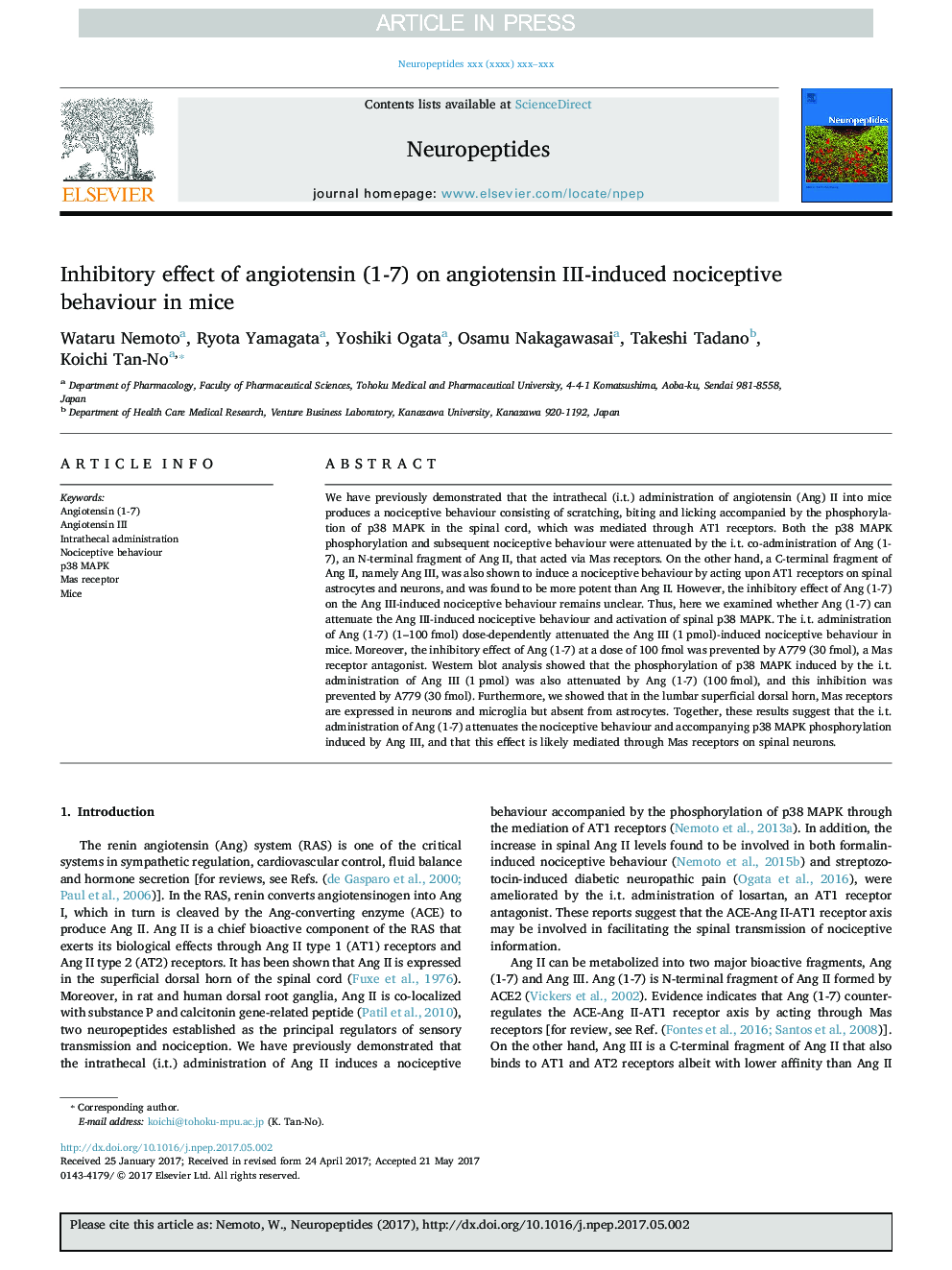| Article ID | Journal | Published Year | Pages | File Type |
|---|---|---|---|---|
| 8633443 | Neuropeptides | 2017 | 6 Pages |
Abstract
We have previously demonstrated that the intrathecal (i.t.) administration of angiotensin (Ang) II into mice produces a nociceptive behaviour consisting of scratching, biting and licking accompanied by the phosphorylation of p38 MAPK in the spinal cord, which was mediated through AT1 receptors. Both the p38 MAPK phosphorylation and subsequent nociceptive behaviour were attenuated by the i.t. co-administration of Ang (1-7), an N-terminal fragment of Ang II, that acted via Mas receptors. On the other hand, a C-terminal fragment of Ang II, namely Ang III, was also shown to induce a nociceptive behaviour by acting upon AT1 receptors on spinal astrocytes and neurons, and was found to be more potent than Ang II. However, the inhibitory effect of Ang (1-7) on the Ang III-induced nociceptive behaviour remains unclear. Thus, here we examined whether Ang (1-7) can attenuate the Ang III-induced nociceptive behaviour and activation of spinal p38 MAPK. The i.t. administration of Ang (1-7) (1-100Â fmol) dose-dependently attenuated the Ang III (1Â pmol)-induced nociceptive behaviour in mice. Moreover, the inhibitory effect of Ang (1-7) at a dose of 100Â fmol was prevented by A779 (30Â fmol), a Mas receptor antagonist. Western blot analysis showed that the phosphorylation of p38 MAPK induced by the i.t. administration of Ang III (1Â pmol) was also attenuated by Ang (1-7) (100Â fmol), and this inhibition was prevented by A779 (30Â fmol). Furthermore, we showed that in the lumbar superficial dorsal horn, Mas receptors are expressed in neurons and microglia but absent from astrocytes. Together, these results suggest that the i.t. administration of Ang (1-7) attenuates the nociceptive behaviour and accompanying p38 MAPK phosphorylation induced by Ang III, and that this effect is likely mediated through Mas receptors on spinal neurons.
Related Topics
Life Sciences
Biochemistry, Genetics and Molecular Biology
Endocrinology
Authors
Wataru Nemoto, Ryota Yamagata, Yoshiki Ogata, Osamu Nakagawasai, Takeshi Tadano, Koichi Tan-No,
